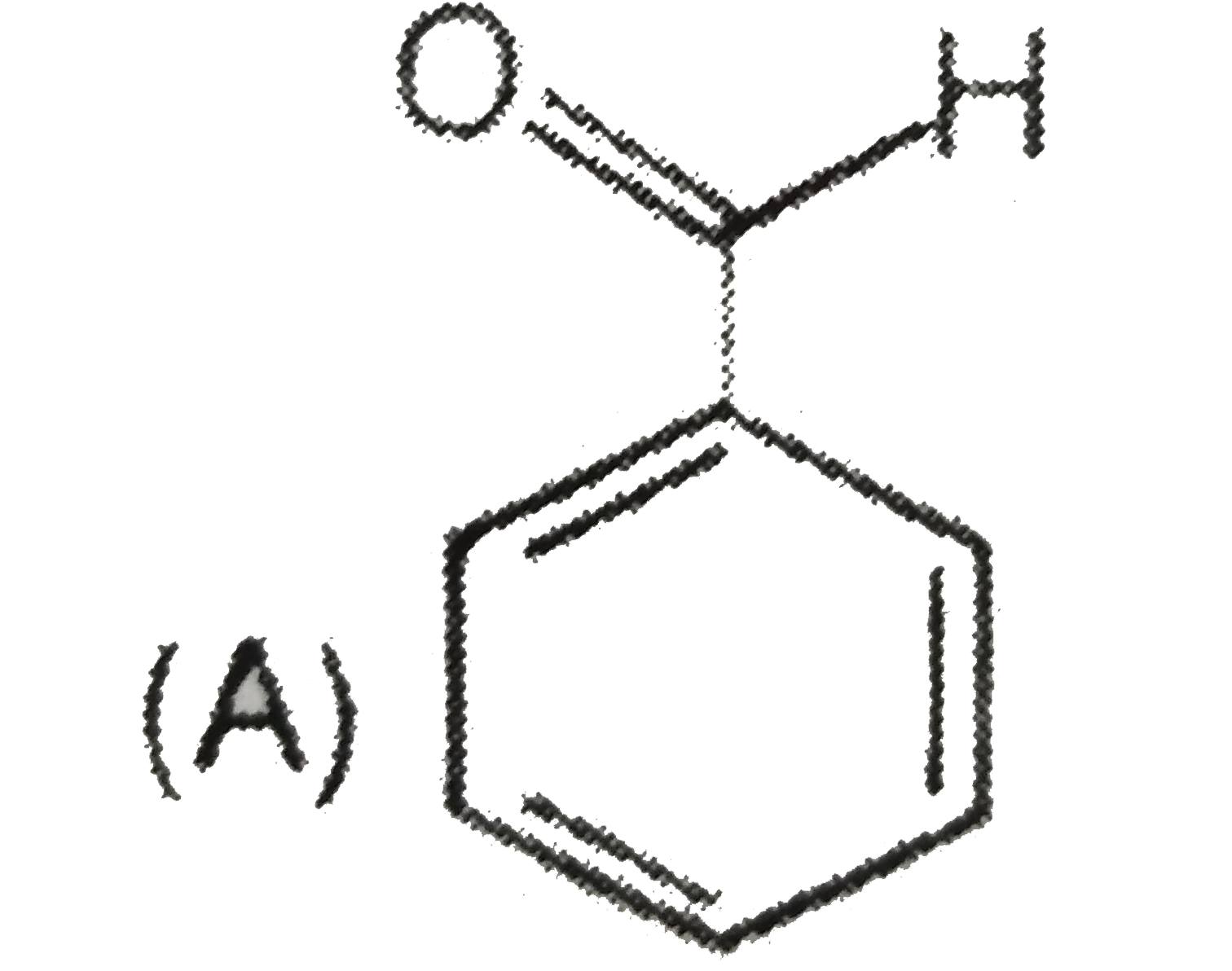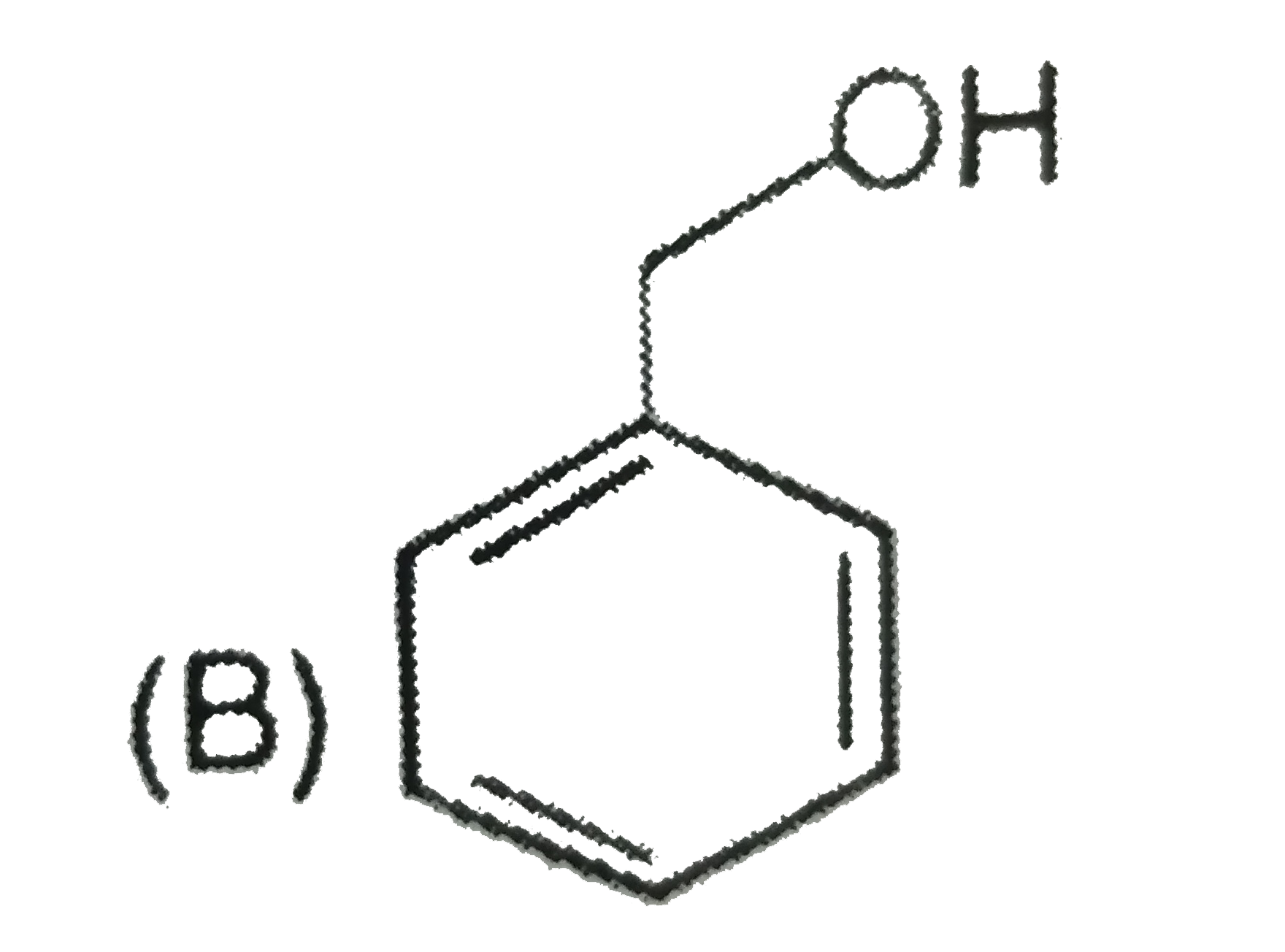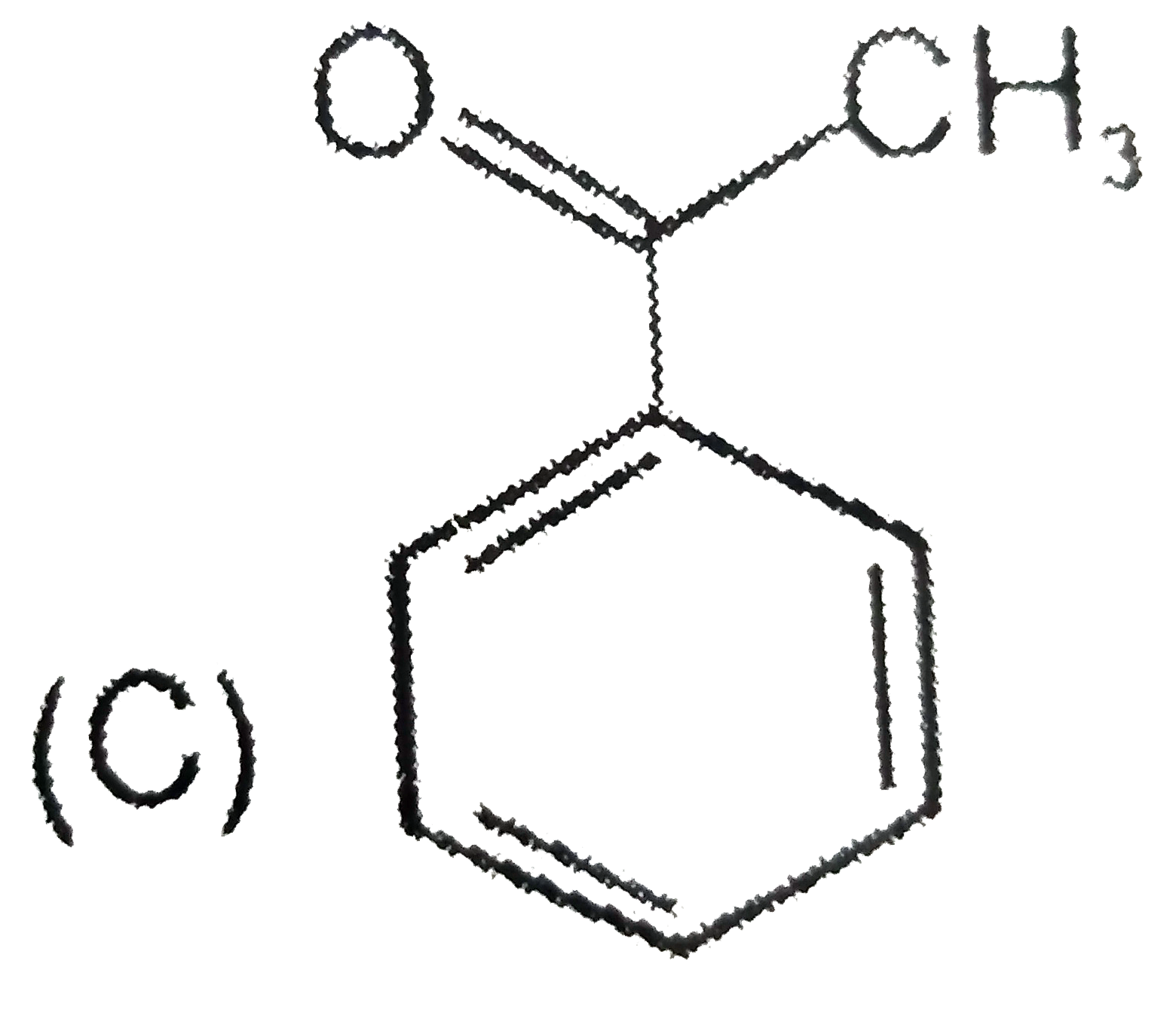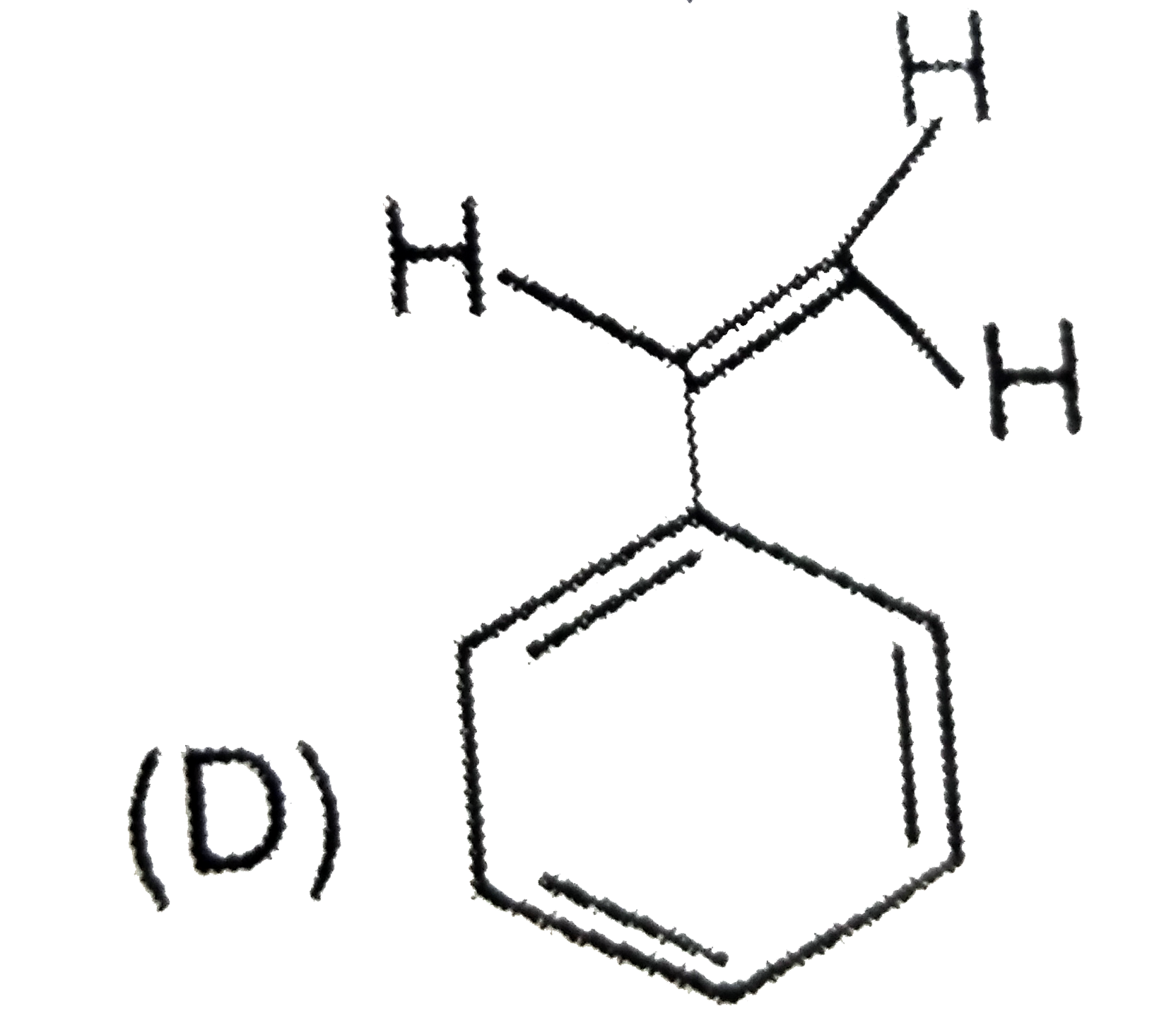In the following reaction sequence, the compound J is an
interemediate
I(CH3CO)2O−−−−−−−−−−→CH3COONaJ(i)H2,Pd/C−−−−−−−−−−−−→(ii)SOCl2(iii)anhyd.AlCl3K
J(C9H8O2) gives effervsecence on the treament withNaHCHO3
and positive Baeyr's test.
The compound I , is




The correct Answer is:A
To solve the question step by step, we need to analyze the given reaction sequence and identify the compound I based on the information provided.
Step 1: Understanding the Reaction Sequence
The question states that compound J is formed from compound I through a reaction with sodium acetate (CH₃COONa) and acetic anhydride ((CH₃CO)₂O). This suggests that a condensation reaction takes place, likely a Claisen condensation or a similar reaction.
Hint: Look for reactions involving carbonyl compounds and consider the role of sodium acetate and acetic anhydride.
Step 2: Identifying Compound J
The compound J is given as C₉H₈O₂. The information about J giving effervescence with NaHCO₃ indicates that it is likely a carboxylic acid, as carboxylic acids react with bicarbonates to produce carbon dioxide gas. The positive Baeyer's test indicates the presence of a double bond, specifically a carbon-carbon double bond.
Hint: Focus on the molecular formula C₉H₈O₂ and consider the functional groups that could be present.
Step 3: Deducing the Structure of J
Given that J is a carboxylic acid with a double bond, it is likely to be cinnamic acid (C₉H₈O₂), which has the structure of a phenyl group attached to a vinyl group (C=C) and a carboxylic acid (–COOH).
Hint: Sketch the structure of cinnamic acid to visualize its functional groups.
Step 4: Identifying Compound I
Since J is formed from I through a reaction with sodium acetate and acetic anhydride, and considering that the reaction is likely a condensation reaction, compound I must be benzaldehyde (C₇H₆O). Benzaldehyde can react with sodium acetate in a condensation reaction to form cinnamic acid.
Hint: Recall the structure of benzaldehyde and consider how it can lead to the formation of a compound like cinnamic acid.
Step 5: Conclusion
Thus, the compound I is benzaldehyde (C₇H₆O).
Final Answer
The compound I is benzaldehyde (C₇H₆O).
---
The question states that compound J is formed from compound I through a reaction with sodium acetate (CH₃COONa) and acetic anhydride ((CH₃CO)₂O). This suggests that a condensation reaction takes place, likely a Claisen condensation or a similar reaction.
The compound J is given as C₉H₈O₂. The information about J giving effervescence with NaHCO₃ indicates that it is likely a carboxylic acid, as carboxylic acids react with bicarbonates to produce carbon dioxide gas. The positive Baeyer's test indicates the presence of a double bond, specifically a carbon-carbon double bond.
Given that J is a carboxylic acid with a double bond, it is likely to be cinnamic acid (C₉H₈O₂), which has the structure of a phenyl group attached to a vinyl group (C=C) and a carboxylic acid (–COOH).
Since J is formed from I through a reaction with sodium acetate and acetic anhydride, and considering that the reaction is likely a condensation reaction, compound I must be benzaldehyde (C₇H₆O). Benzaldehyde can react with sodium acetate in a condensation reaction to form cinnamic acid.
Thus, the compound I is benzaldehyde (C₇H₆O).
The compound I is benzaldehyde (C₇H₆O).
Topper's Solved these Questions
- CARBONYL COMPOUNDS (ALDEHYDES & KETONES ) & CARBOXYLIC ACID BOOK - RESONANCE ENGLISHCHAPTER - CARBONYL COMPOUNDS (ALDEHYDES & KETONES ) & CARBOXYLIC ACID EXERCISE - PART- IV
13 Videos
- CARBONYL COMPOUNDS (ALDEHYDES & KETONES ) & CARBOXYLIC ACID BOOK - RESONANCE ENGLISHCHAPTER - CARBONYL COMPOUNDS (ALDEHYDES & KETONES ) & CARBOXYLIC ACID EXERCISE - Exercise-3
1 Videos
- CARBONYL COMPOUNDS (ALDEHYDES & KETONES ) & CARBOXYLIC ACID BOOK - RESONANCE ENGLISHCHAPTER - CARBONYL COMPOUNDS (ALDEHYDES & KETONES ) & CARBOXYLIC ACID EXERCISE - Exercise-2 Part-I
1 Videos
- BIOMOLECULES & POLYMERBOOK - RESONANCE ENGLISHCHAPTER - BIOMOLECULES & POLYMEREXERCISE - ORGANIC CHEMISTRY(Biomolecules & Polymer)
34 Videos
- CHEMICAL KINETICSBOOK - RESONANCE ENGLISHCHAPTER - CHEMICAL KINETICSEXERCISE - PHYSICAL CHEMITRY (CHEMICAL KNIETICS & RADIOACTIVITY)
49 Videos
Similar Questions
Knowledge Check
In the following reaction sequence,
CH3−C∣OH(X)H−CH3[O]−−→YCH3MgBr−−−−−−−−→H+/H2OZ
Z isAbutan-1-olBbutan-2-olC2-methylpropan-2-olD1,1 - dimethylethanol.Compounds A and C in the following reaction are
CH3CHO(i)CH3MgBr−−−−−−−−→(ii)H2OAH2SO4.Δ−−−−−−→(B)Hydroboration oxidation−−−−−−−−−−−−−−→(C)AidenticalBpositional isomersCfunctional isomersDoptical isomers.Compounds A and C in the following reaction are
CH3CHO(i)CH3MgBr−−−−−−−−→(ii)H2OAH2SO4.Δ−−−−−−→(B)Hydroboration oxidation−−−−−−−−−−−−−−→(C)AidenticalBpositional isomersCfunctional isomersDoptical isomers.
Complete the following reaction sequence :
CH3−O∣∣C−CH3(i)CH3MgBr−−−−−−−−→(ii)H2O(A)Na metal−−−−→ether(B)CH3−Br−−−−−→(C)
View SolutionIn the given reaction sequences the final product 'C' is
CH3−CH2−OH(i)KMnO4/−OH/Δ−−−−−−−−−−−−−−−→(ii)H2O+(A)(i)SOCl2−−−−−−−−→(ii)NH3(B)Br2/KOH−−−−−−→(C)
View SolutionIn the following reaction, trace the position of isotopic O18
CH3−O∣∣C−O−H+CH3CH2−18O−H⇔CH3−O∣∣C−O−CH2CH3
+H2O
View SolutionIn the following sequence of reactions, the alkene formed the compound ‘B’
CH3CH2CH=CHCH2CH3O3−−→AH2O−−→ZnB
The compound B is :
View SolutionCompounds A and C in the following reaction are
CH3CHO(i)CH3MgBr−−−−−−−−→(ii)H2OAH2SO4.Δ−−−−−−→(B)Hydroboration oxidation−−−−−−−−−−−−−−→(C)
View Solution
